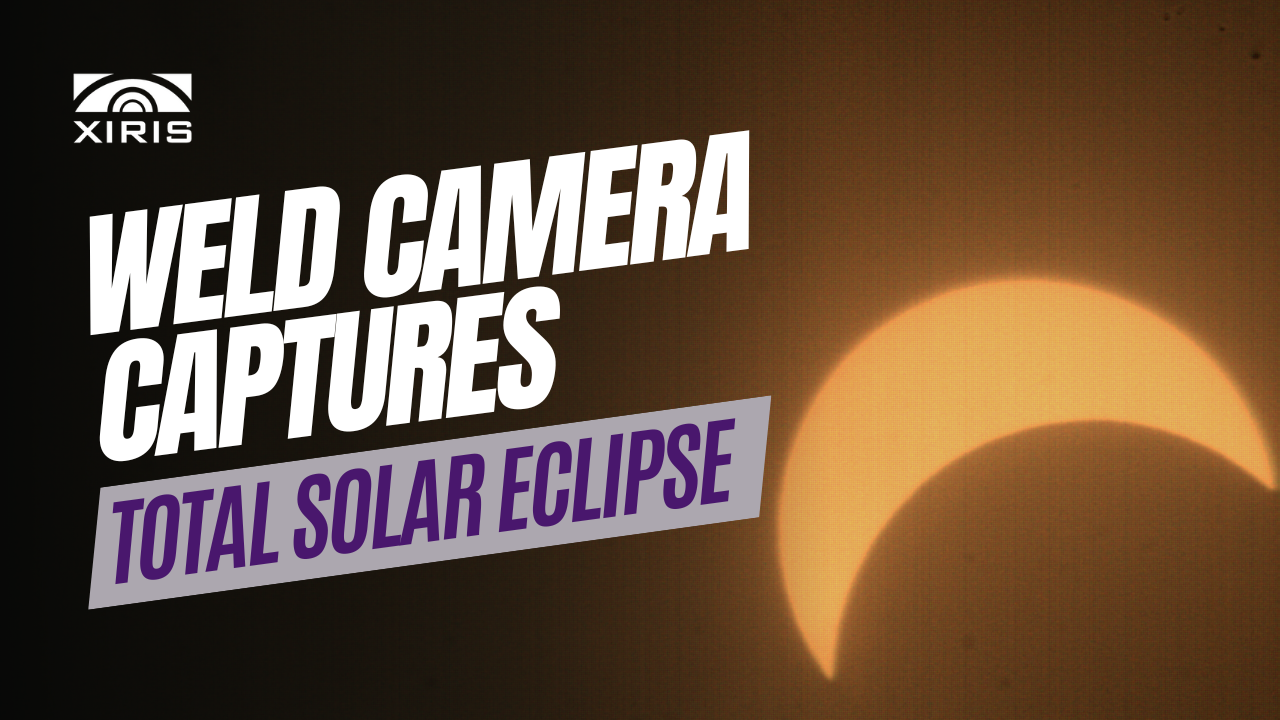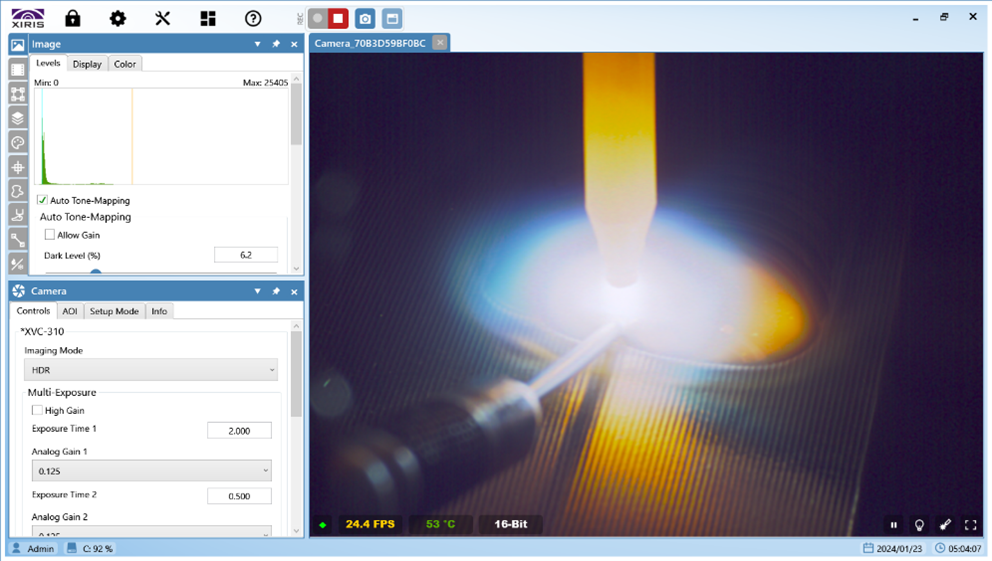Realizing the potential of technology to improve their automated welding processes, progressive fabricators turn to automating their welding processes to achieve greater quality control, productivity, and safety from their equipment.
A key element of a successful welding automation installation has to be the use of a Weld Camera. Improvements in camera technology and image processing have made it possible to supply Weld Cameras with High Dynamic Range imaging, which dramatically improves the ability of operators to remotely view the critical details of a weld process.
A weld tip can be more than 10 million times brighter than the background metal around it, but standard cameras are only able to image a range of brightness of about 1,000:1 (i.e. 50-60 dB). This had historically limited the effectiveness of using cameras for remote weld monitoring.
.jpg?width=275&height=183&name=save_money_image_(640x427).jpg) However, Weld Cameras such as the Xiris XVC- O, with High Dynamic Range imaging capability in excess of 10,000,000:1 (140+ dB), allows operators to have greater visibility of the weld process than possible using other equipment. That’s because other equipment, such as a standard welding helmet, simply suppress the light intensity, filtering out the details of the weld environment in the darker regions, leaving only the brightest portion of the scene. High Dynamic Range imaging, on the other hand, captures a high level of detail in both the super-bright arc region and the dark surrounding region to provide the operator a complete view of the features of the weld.
However, Weld Cameras such as the Xiris XVC- O, with High Dynamic Range imaging capability in excess of 10,000,000:1 (140+ dB), allows operators to have greater visibility of the weld process than possible using other equipment. That’s because other equipment, such as a standard welding helmet, simply suppress the light intensity, filtering out the details of the weld environment in the darker regions, leaving only the brightest portion of the scene. High Dynamic Range imaging, on the other hand, captures a high level of detail in both the super-bright arc region and the dark surrounding region to provide the operator a complete view of the features of the weld.
The XVC-O Weld Camera can be used for virtually any type of welding process. When installed as a component in a welding cell, the improved remote visibility provided to the operator generates many benefits to the fabricator, including these 10 key competitive advantages:
- Less set-up time. Being able to see all the details of the weld scene allows faster set-up of the weld gun and components, boosting productivity.
- Better process control. High Dynamic Range imaging provides a clear view of the weld tip for improved input control. The direct view of the welding arc and the surrounding work environment allows for real-time, perceptive adjustment of the weld torch, weld bead, and tool alignment. This naturally results in increased productivity and quality assurance.
- More arc on time. The XVC-O Weld Camera results in greater run-time productivity because it can see all the relevant weld details without stopping the process to change lighting and make adjustments (e.g., setting wire length and torch position).
- Reduced cost of scrap and in-field failures. The improved process control possible with High Dynamic Range imaging reduces mistakes and prevents defective product from being shipped, which enhances customer loyalty.
- Troubleshooting. Using the high-detail video recording capability provided by the XVC-O Weld Camera, welding problems can be quickly detected and pinpointed before their cost and scope escalate.
- Continuous Improvement. The video record can also be used to identify opportunities to improve the welding process, as well as to better train operators on a continuous basis.
- Health and safety. The health and safety advantages of remote weld monitoring cannot be overstated—by monitoring a weld process remotely, the operator is freed from the immediate threat of long-term health risks, and operating in what can be sometimes a very unpleasant work environment. Not only does this lower health and safety costs, it helps attract better-qualified welders and operators, who quite reasonably prefer to monitor the welding process remotely when possible. With a Weld Camera, these benefits can be achieved, especially if it is equipped with High Dynamic Range imaging.
- Corporate Image. As the capabilities of Weld Cameras become more widely known and used, it appears likely to become the ideal standard in the welding industry. Early adopters can use the capability now to help win customers, provide a competitive advantage, and attract higher-quality employees who place a value on being able to use the best technology.
- Flexibility. Because the right type of Weld Camera, such as the XVC-O, can be customized to work in any type of welding application, the image quality can be optimized for that welding process, generating the best quality of image.
- Reliability. The XVC-O Weld Camera carries the Xiris product guarantee for quality and reliability. Once installed and in place, the XVC-O will become “invisible” to the automation process, doing its job without disrupting your work flow.
To learn more about how fabricators can improve their profitability with the latest Weld Camera technology, download our free whitepaper, “Eight Ways to Improve Welding Productivity Using a Weld Camera.”
Image courtesy of commons.wikimedia.org.







